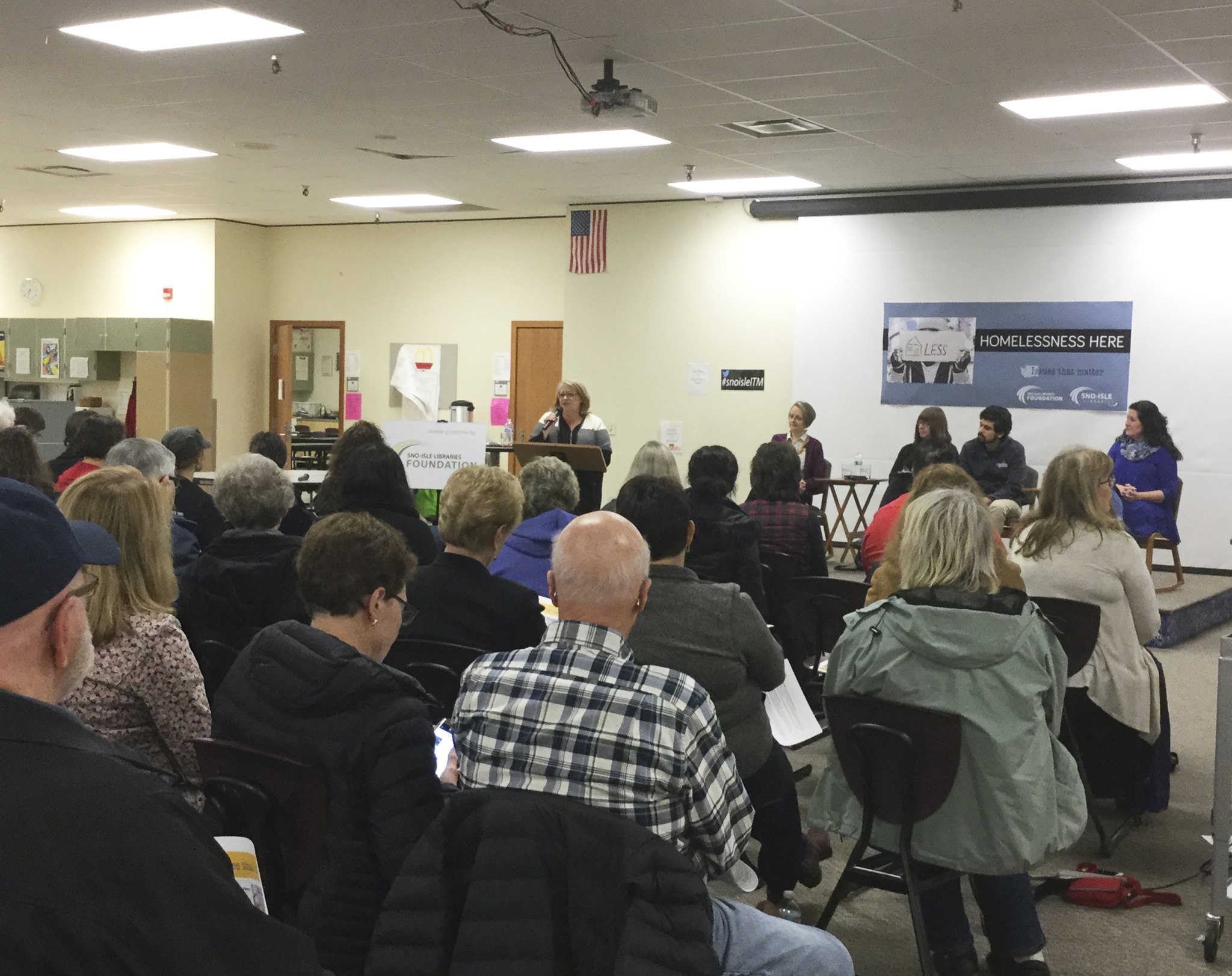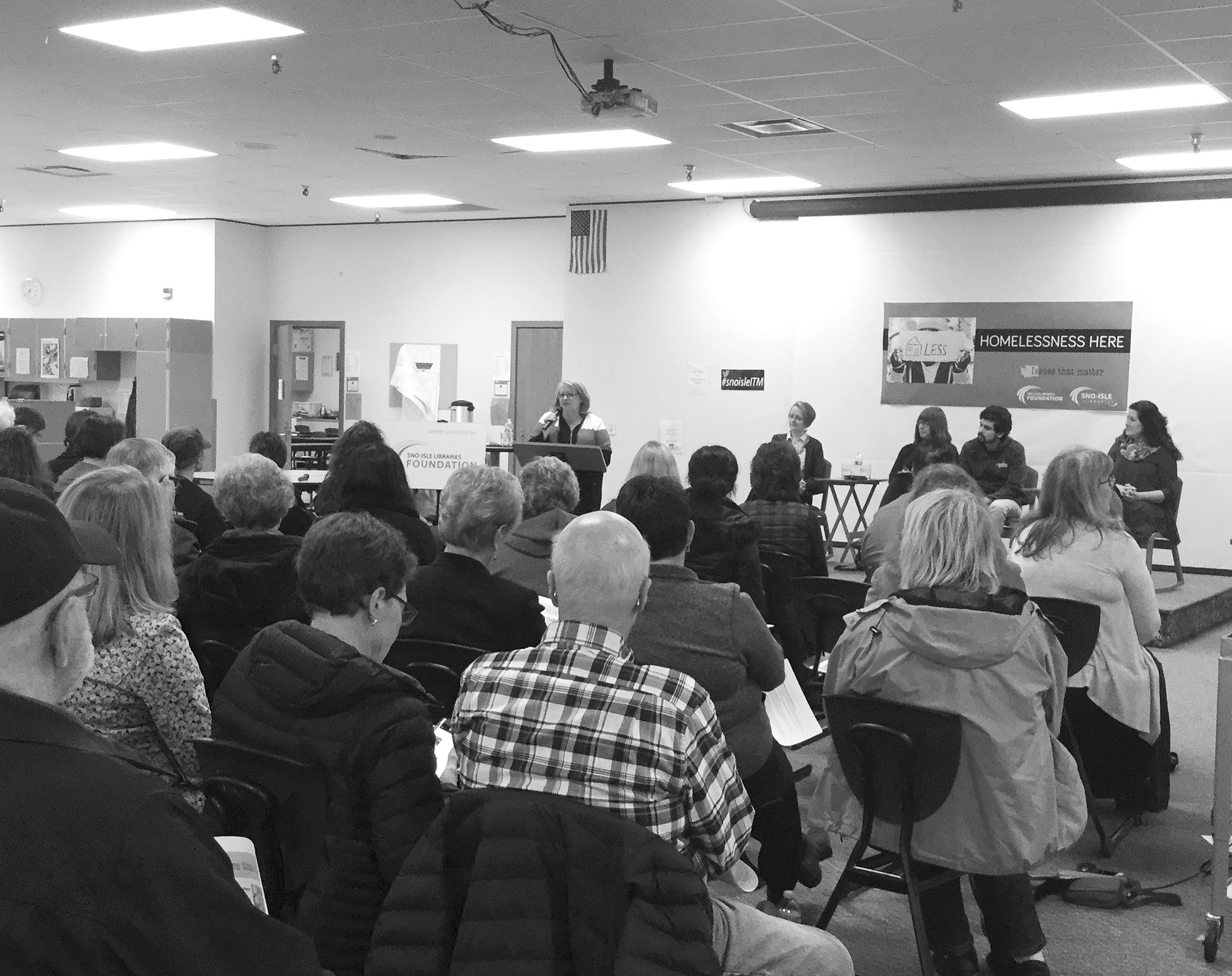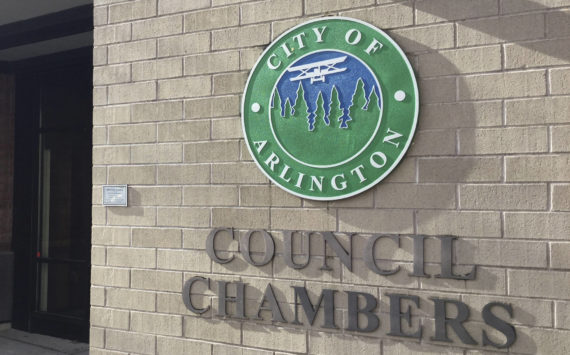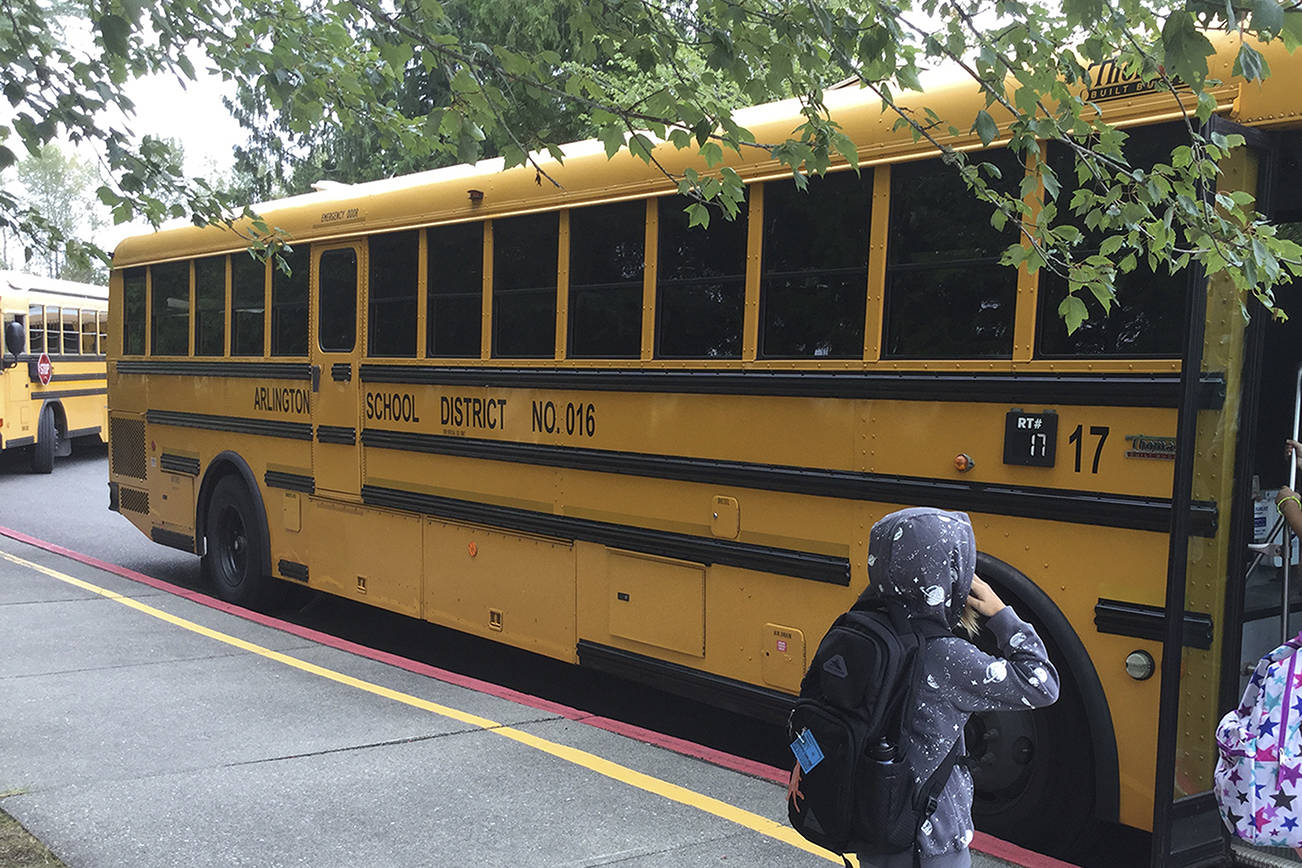ARLINGTON – Regarding the homeless: What would you do if you were in their shoes?
At a forum on homelessness in Arlington Wednesday night, a Stanwood Food Bank volunteer asked that question.
A couple of weeks ago, a 27-year-old woman who had been homeless in Seattle returned to her hometown of Stanwood. She was tired, so a volunteer let her sleep at the food bank, with a mat and some food. At 4 p.m., she brought the woman to the Stanwood Resource Center. While they had no overnight shelter, they suggested places in Arlington, but those possibilities were dead ends. The volunteer asked the panelists and audience what she should have done. The answers weren’t encouraging.
While the panelists wished they had resources to give the woman, and resource ideas for the food bank volunteer, they didn’t have much to suggest, except to say that unless the woman had children she would be low on the list for help.
The postscript is that the food bank volunteer took her time and vehicle to give the woman a ride to her friends’ houses, winding up at the door of a drug house, where the woman flashed cash and stayed.
The story captured many points being discussed that night. On the one hand, many organizations exist that provide services to the homeless. On the other hand, there are people who also know how to refer them in the right direction for help.
About 90 people attended the “Homelessness Here” forum at Weston High School hosted by Sno-Isle Libraries, designed to seek get people talking about solutions. The forum is the third of four sessions in Snohomish County to explore the causes and prevention of homelessness.
As agency and nonprofit providers on the front lines, the panelists provided a picture of the issue locally, and how different groups collaborate to end homelessness, even in small ways. Moderator and Mayor Barb Tolbert said there many challenges for Arlington and other communities, and homelessness is high on the list.
“Cities of every size across the U.S. are grappling with this issue of homelessness,” she said. She cited lack of affordable housing for low-wage workers and families, and inadequate mental health and addiction treatment systems as big contributors to homelessness. Domestic violence and intergeneration poverty also have an impact.
She added that less urbanized cities like Arlington face low vacancy rates and soft development economies that don’t have enough affordable housing for those who need it.
“We are seeking to better understand the network of community support resources today, as well as to understand the gaps in those services,” and what we can do to help fill those gaps, Tolbert said.
Kristin Cane with the Housing Authority of Snohomish County, or HASCO, said shortages of affordable housing is one factor that keeps people from having a roof over their heads.
The county has a shortfall of 16,000 affordable homes, a number that keeps growing each year. With a market so unprofitable to private sector builders, the public sector has to step in.
Cane said a person needs to make $18 an hour to pay for a two-bedroom rental, or $30 an hour for a three-bedroom. The average home rental rate is $1,500 a month. For people making poverty wages, struggling with long-term unemployment, or retirees on fixed incomes, that isn’t an option, taking other household costs into consideration.
HASCO’s goal to try to make homelessness rare, brief and one time, Cane said. The organization tries to get the more vulnerable individuals into short-term housing, and provide wraparound services for needs such as addiction treatment.
Nico Quijano works for Cocoon House. The organization provides short- and long-term housing to homeless people ages 12-17. Teens get help in school, preparing for employment, learning life skills and accessing community services. Cocoon House has a home in Arlington for pregnant or parenting teen mothers and their children.
By the numbers, the homelessness landscape for youth isn’t good. Among 4,000 school students who are homeless in the county, 391 are in Marysville, 194 in Stanwood and 156 in Arlington. They may be sleeping in cars, loitering around or wandering to pass the time.
“That seems like an alternative universe roaming the streets, but that’s the reality,” Quijano said.
To help them, let them know where the food bank is, for example. Hand a homeless person a 211 card for health and human service information, or connect them with a local group that can help them.
Panelist Seanna Herring-Jensen, program manager at the Arlington Community Resource Center, said the center supports individuals in need of help, assisting with counseling, facilitation of support groups and other services.
Most of the people there are from Arlington. “They went to Arlington High School and the stay here to be near family. They are having a really tough time,” she said.
Herring-Jensen, a member of the North County Homeless Coalition, and part of the Point In Time homeless count, said official counts won’t be available until spring. However, she did say 150 homeless were counted in Arlington, and 400 total in the north county – about 200 more than last year.
One project the coalition wants to develop is a one-stop shop location that would provide the homeless three warm meals a day, a place to sleep during the day, laundry services and showers.
The coalition also is interested in Arlington’s proposal to launch a community court to keep low-level offenders out of jail, while also getting them access to services that fit their needs.
Herring-Jensen reminded attendees that while it may go against their generous nature, “Please don’t pass out money to panhandlers.”
The likelihood of the money going to drugs, alcohol or other purposes is high,” she added. Instead, she said, “Hand out resources. Hand out food packages or hygiene products.”
Marilyn Sinclair of Arlington said after the forum that she learned a lot about homelessness in her back yard. “I was glad to hear that there are so many groups trying to work together to end homelessness, but it seems like a bigger challenge than any one organization can handle,” she said.








